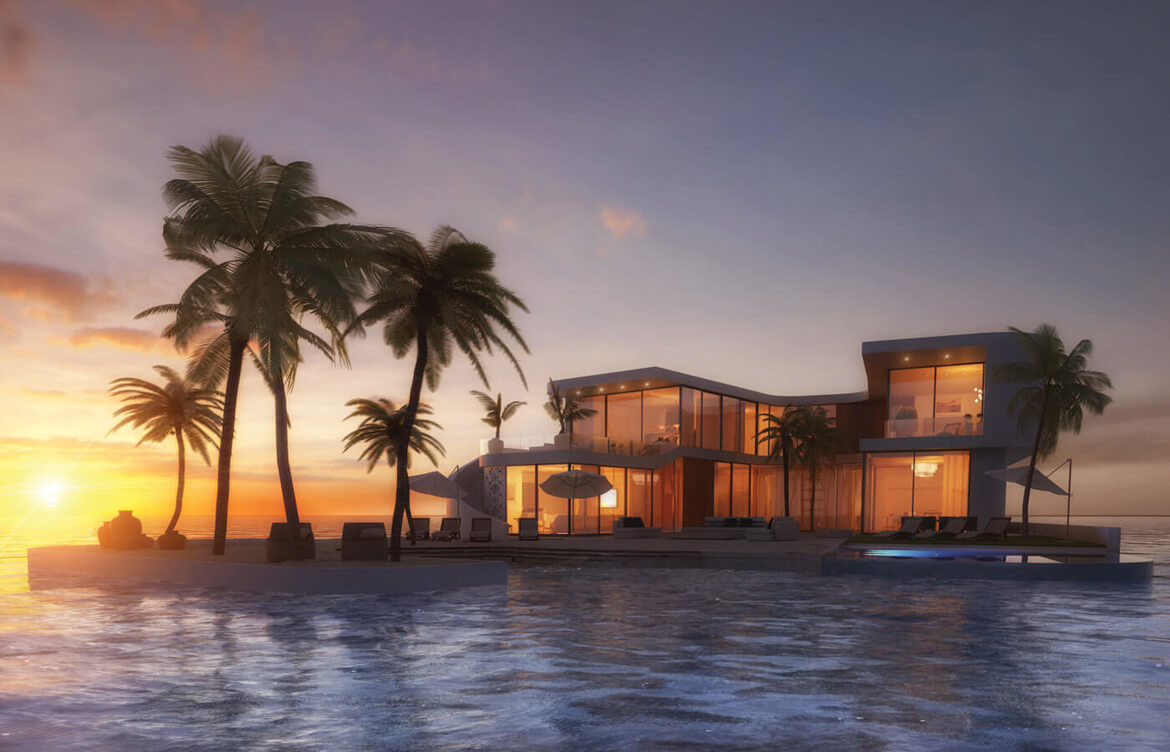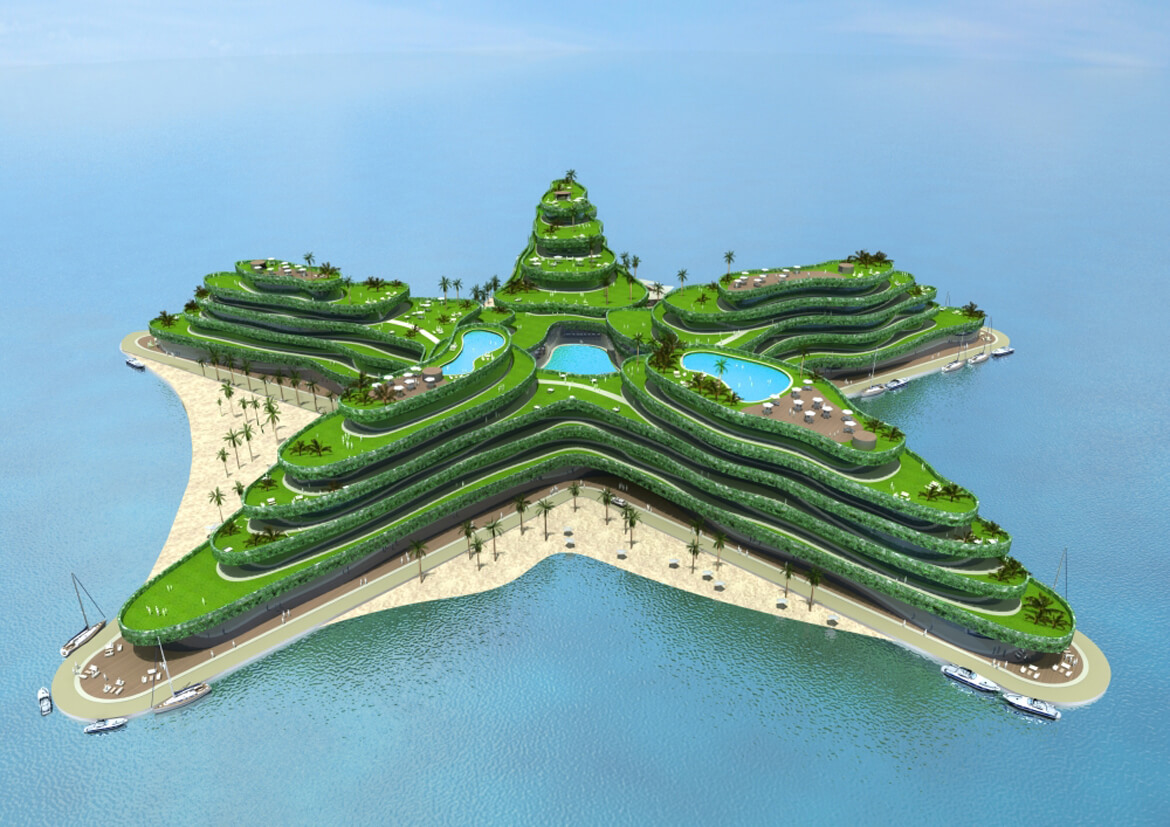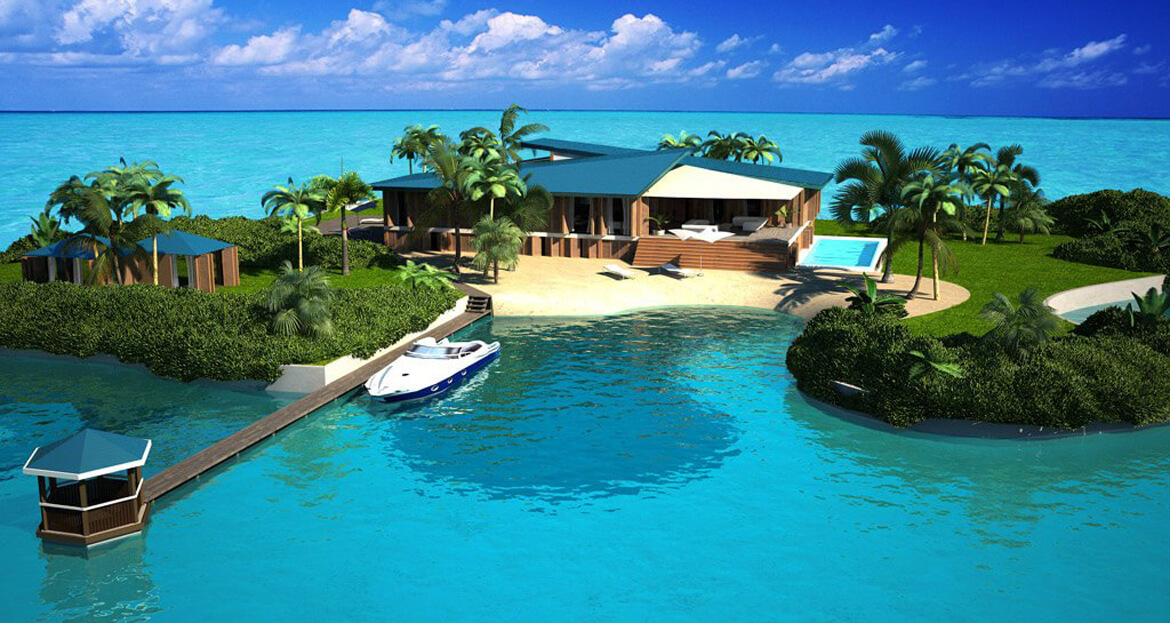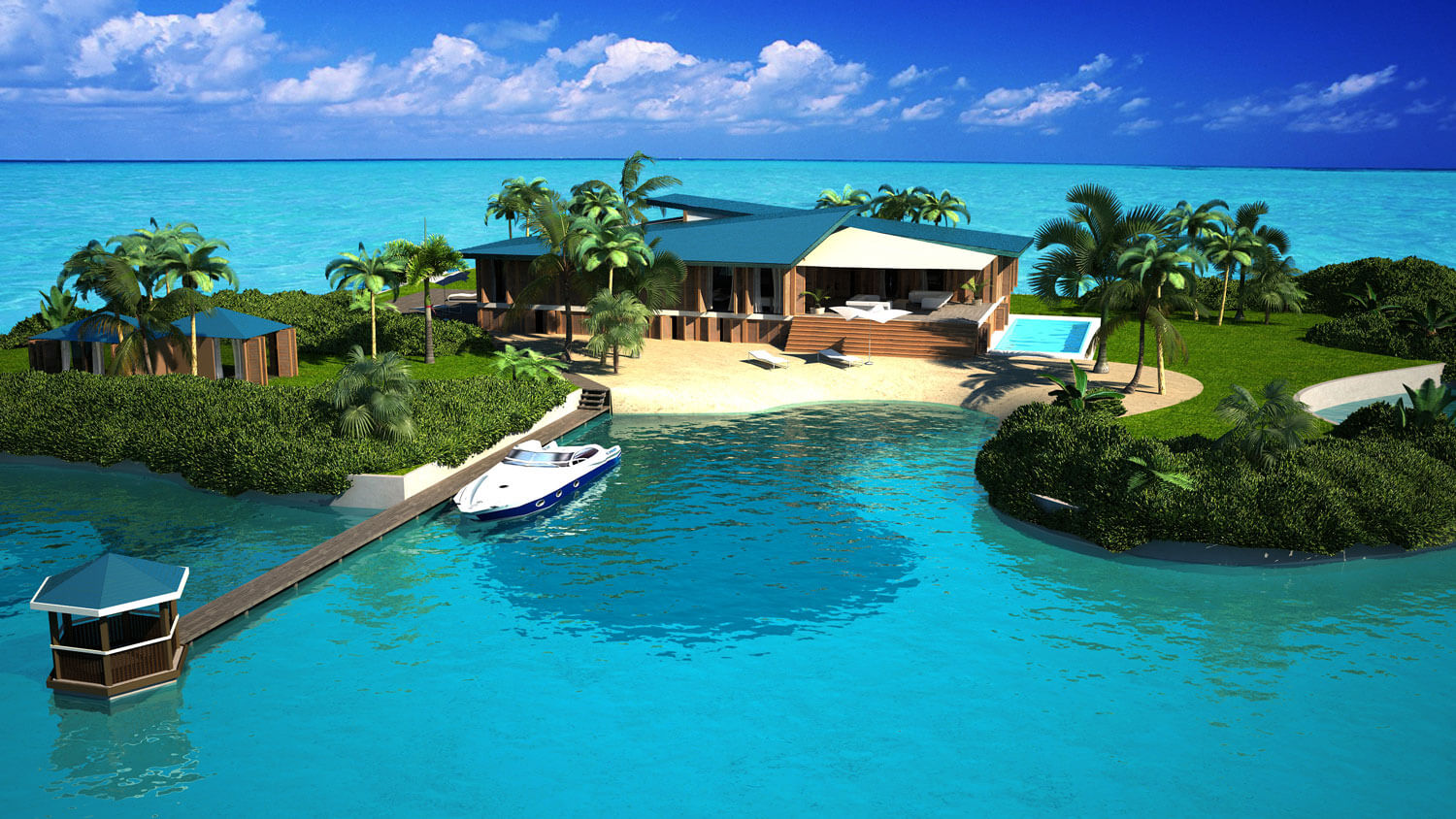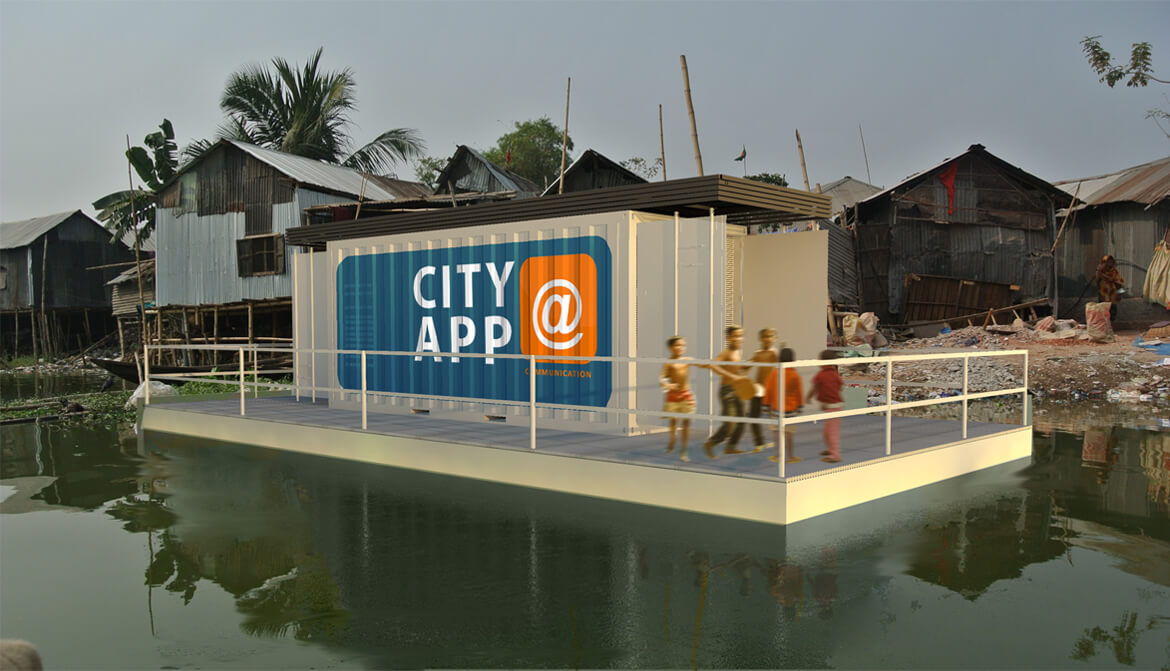
Christie’s to Sell the World’s First Portable Private Islands
By Jim Dobson
Forbes
August.2015
Christie’s International Real Estate has announced a new initiative to build self-sufficient and eco-friendly private islands around the world for consumers looking for a unique residential opportunity. The world’s first truly portable private islands.
Amillarah Private Islands will allow guests to make their own self-sufficient island and determine its location anywhere in the world. Brands often provide luxury services by adhering to the consumer’s every wish, and Christie’s, along with its partner Dutch Docklands, will be bringing both luxury real estate and customization to a new level with these islands.
“This partnership with Dutch Docklands fits in perfectly with our strategy,” said Michael Sherman, vice president of corporate communications, Christie’s International Real Estate, New York.

Amillarah Miami Island rendering
A private island to call your own may sound like a fantasy or a lifelong dream, but with Amillarah Private Islands it is a reality.
Amillarah has created unique tailor-made floating residences designed by famed Dutch architect Koen Olthuis, who was named one of the most influential people by Time Magazine. These completely self-sustainable floating islands are free from environmental impact, safe from rising sea levels, and will create a new underwater habitat for sea life.
Create your own private paradise wherever you want. Not only can you customize the size, shape, and style of your floating residence, but you get to choose where you want it to be located. Miami? Maldives? Dubai? New York?

Amillarah Miami Island rendering
Amillarah is the creative vision of expert developer Dutch Docklands. Founded in 2005 by Paul H.T.M. van de Camp and Koen Olthuis, this innovative company is based on hundreds of years of Dutch expertise or “Know-H2OW” in water defense technology and management.
For hundreds of years the Dutch have lead the world in water defense technology, which is why Amillarah Private Islands’ developers Dutch Docklands was the perfect fit to develop these luxury, floating islands. Working globally in cooperation with Christie’s and famed oceanographer Jean-Michel Cousteau’s Ocean Futures Society charity, this is the ultimate team.

Amillarah Private Island rendering
Whether you prefer a romantic styled island surrounded by natural green, your own tropical island with white sandy beaches or a modern urban contemporary styled island, it is up to the buyer.
Amillarah Private Islands are self-sufficient, scarless developments with the latest state-of-the-art green technology, which keeps their environmental impact at a minimum.
Completely stable on the water, the base of the island is built to last for far over 100 years and will create a new underwater habitat for sea life.

Amillarah Maldives Island rendering
MALDIVES
In one of the most beautiful lagoons in the Maldives, the company is developing in a Joint Venture with the Government of Maldives 10 Amillarah Private Islands. The breathtaking lagoon is only a 25-minute boat transfer away from the airport. The islands will all be designed with a maximum of privacy and luxury in mind, giving the owners the ultimate get-away-from-it-all.

Amillarah Dubai Island rendering
DUBAI
The company has signed a deal with OQYANA Real Estate for a total of 33 Amillarah Private Islands within the OQYANA WORLD FIRST developments on ‘The World Islands’ project in Dubai.
The deal was inked in Dubai between Ali O Alghannam, CEO of OQYANA Real Estate and Paul van de Camp, CEO of Dutch Docklands, in the presence of Zeyad Abdullatif Janahi, the Chairman of OQYANA Real Estate Company.

Amillarah Maldives Island rendering
MIAMI
Connected to the Inter Coastal and the Ocean, a 175 acre Lake will be the scene of the first Amillarah Private Islands in the United States.
30 Amillarah Private Islands and a VIP amenity island will service the rich and famous of the Miami upper crust while providing the ultimate bragging rights.
Private boat service, butlers and a well-trained island staff ensure a luscious stay at one of the world’s most talked about developments in recent decade. The Miami islands will be surrounded by the upscale nightlife, restaurants , shopping and entertainment this ultimate destination has to offer.

Amillarah Dubai Island rendering
Click here for the source website
Green light for Dubai’s first private floating islands
By Parag Deulgaonkar
Emirates 24|7
June.2015
Oqyana World First to have 33 floating houses with own beach, garden and pool
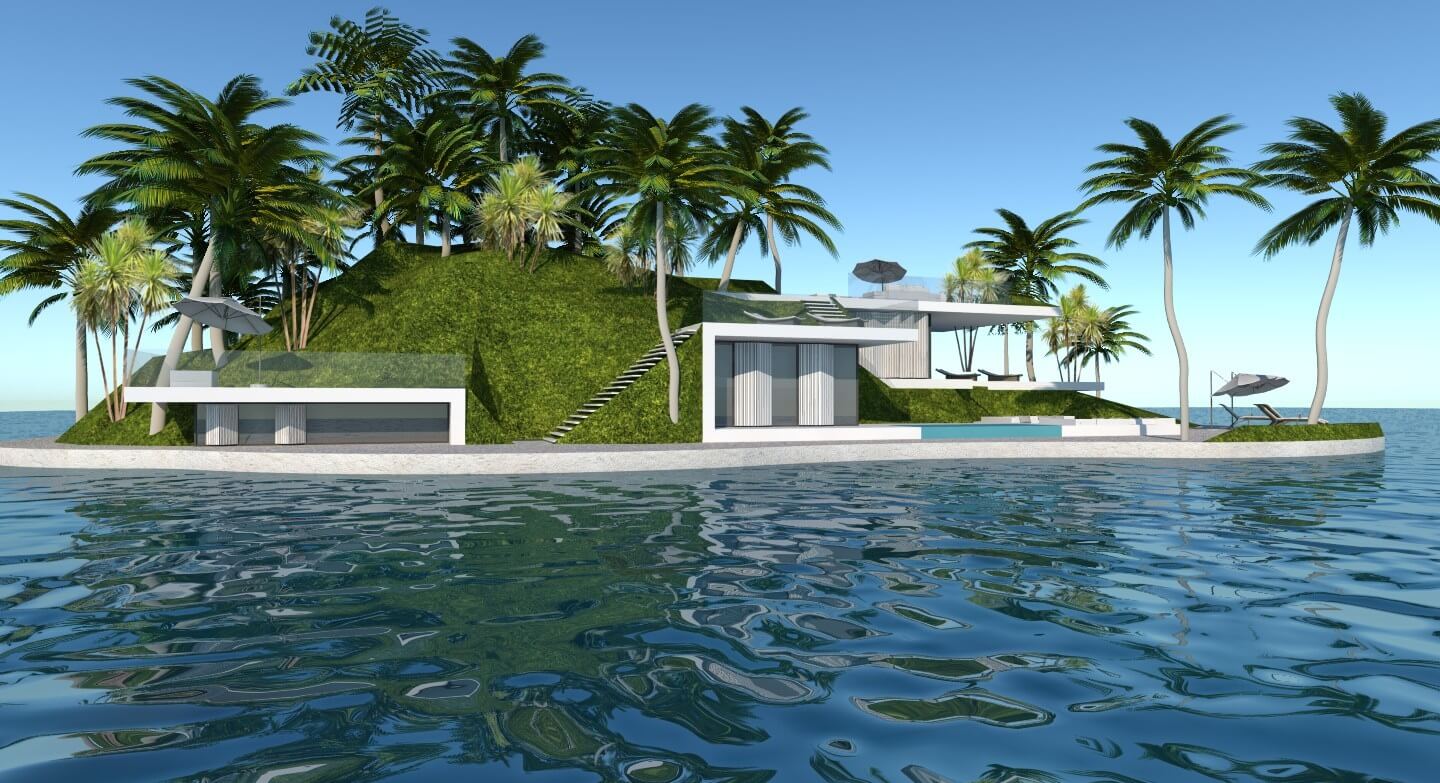 Oqyana Real Estate and Amillarah Private Islands will create will be 33 luxury floating private islands with each having a garden, pool and beach. (Supplied)
Oqyana Real Estate and Amillarah Private Islands will create will be 33 luxury floating private islands with each having a garden, pool and beach. (Supplied)
Dubai-based Nakheel has given the go-ahead to the developer of the floating islands, which are part of Oqyana World First, on The World, an artificial archipelago of over 300 islands, according to the project developers.
“Nakheel has now granted our project with all the necessary permits in order to take the next step,” Oqyana Real Estate and Amillarah Private Islands said in a joint statement.
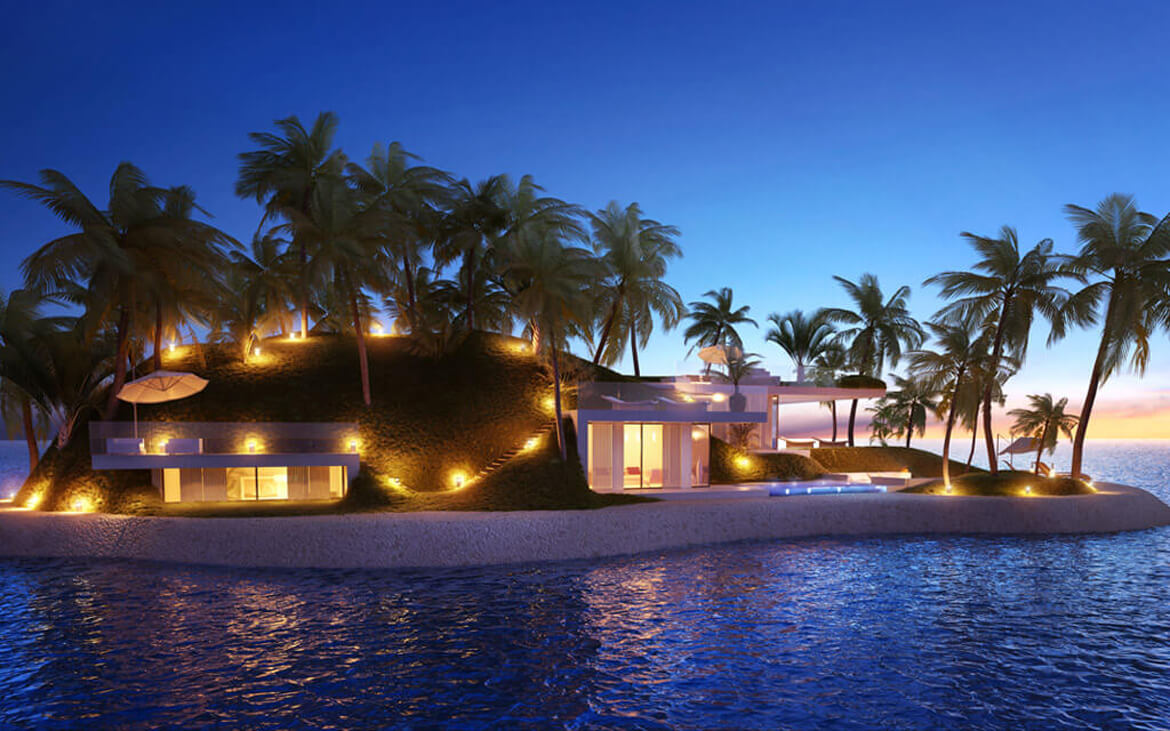
The developer claims it was the ‘first’ floating project ‘officially approved’ on The World, which has been developed by Nakheel, a wholly-owned government entity.
In January 2015, the two companies signed a deal to create a series of floating private islands as part of the project located on Australasia.
There will be 33 luxury floating private islands with each having a garden, pool and beach.
“We are offering floating private islands, tailor made to the clients specifications, based on our Dutch heritage of hundreds of years of working with the water,” Paul van de Camp, CEO, Amillarah, told Emirates 24|7.
“We do not want to start any sales before all permits are granted and all technical details are engineered.”
Completely stable on the water, the base of the island is built to last for far over 100 years and will create a new underwater habitat for sea life, the company states, adding, it is building similar islands in Maldives and in Miami in the US.
Oqyana World First comprises high-end villas, apartments, hospitality and retail elements.
In May 2015, this website reported that Kleindienst Group, developer of the Heart of Europe development on The World, had sold 35 of 42 Dh6.5-million ‘floating seahorses’, which will have the master bedroom and bathroom totally submerged underwater, to Gulf Cooperation Council nationals, Europeans and Indians.
The World
The World project is nine-kilometres wide and seven-kilometres long.
It covers an area of 931 hectares and will add 232km to Dubai’s natural 67km of beachfront.
The islands range from 150,000 to 450,000 square feet in size.
The project is divided into private estate island zones, commercial zones, which have low/mid/high density resorts, hubs for ferry transfer points and public visitor areas.
Testing the Waters: Floating home development in Florida
By Amy Martinez
Florida Trend
February.2015
A 2013 U.S. Supreme Court ruling could lead to a first-of-its-kind floating home development in south Florida.
(Amy Martinez)
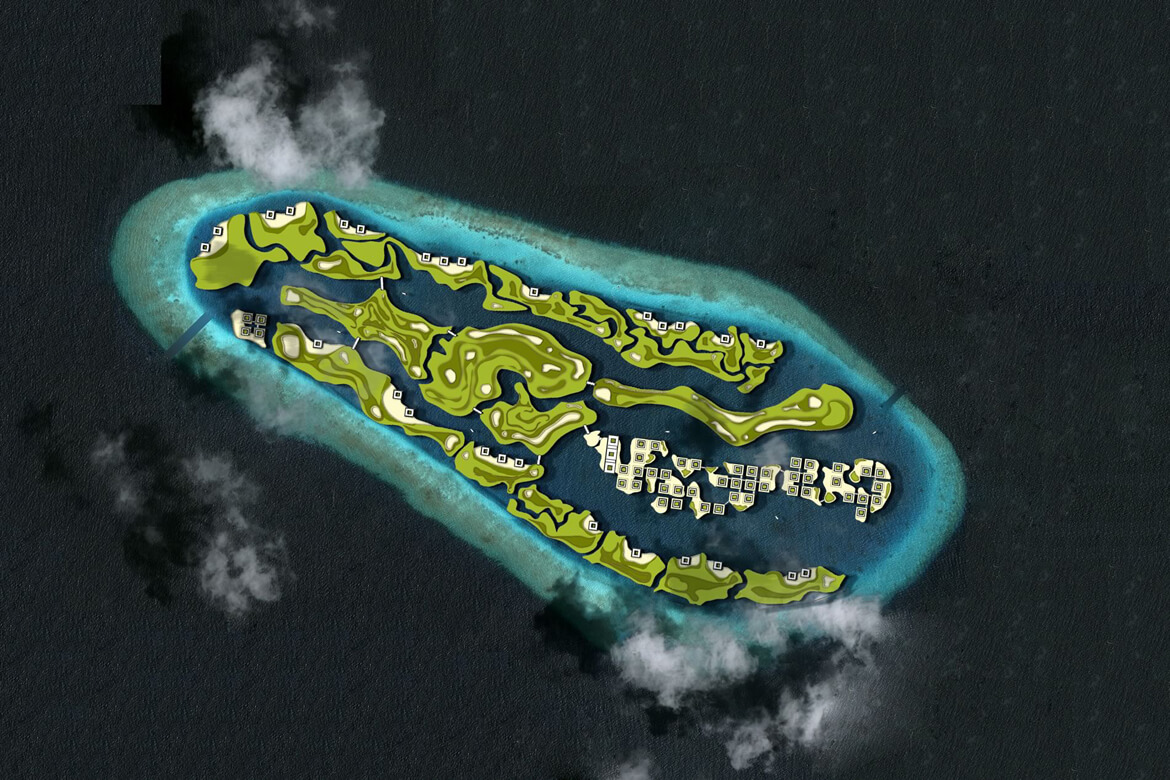
In 2005, Hurricane Wilma destroyed a pair of dilapidated marinas in North Bay Village where Fane Lozman, a former Marine pilot and software developer, kept a two-story floating home.
The Category 3 storm struck from the south, scattering splintered docks and other large debris into more than a dozen neighboring floating homes.
For years, Lozman had relished the camaraderie and convenience of living on Biscayne Bay, especially the easy access to deep-sea diving and fishing and his favorite Miami Beach restaurants. “Your speedboat was tied up right outside your front door. And you could enjoy the south Florida water lifestyle immediately and at any time,” he says.
After Lozman’s floating home, which had been docked at the north end of the marina community, emerged relatively unscathed, he quickly began looking for another place to anchor. In 2006, he had his home towed 70 miles north to Riviera Beach and rented a slip at a city-owned marina.
His new neighbors told him not to get too comfortable, however, because a planned, $2.4-billion marina redevelopment project soon would displace them. Lozman sued Riviera Beach to stop the project. And that led to another dispute, which eventually wound up before the U.S. Supreme Court.
In 2009, after failing to evict Lozman in state court, Riviera Beach went to federal court, seeking a lien for about $3,000 in dockage fees and nominal trespass damages.
The city argued that because Lozman’s floating home could move across water, it was a vessel under U. S. maritime law. A federal judge in Fort Lauderdale agreed, and the home was seized, sold at auction and destroyed by Riviera Beach, which cast the winning bid.
Lozman countered that his home was similar to an ordinary landbased house and should have been protected from seizure under state law. The home consisted of a 60-by- 12-foot plywood structure built on a floating platform — with no motor or steering — and could move only under tow.
Lozman’s appeal caught the Supreme Court’s eye. And in early 2013, it handed him a victory. Justice Stephen Breyer wrote in the majority opinion that because Lozman could not “easily escape liability by sailing away” and because he faced no “special sea dangers,” his home was not a vessel and not subject to seizure under maritime law. Lozman is still seeking compensation from Riviera Beach for his home’s destruction.
After the Supreme Court’s ruling, Kerri Barsh, a Greenberg Traurig attorney who helped argue Lozman’s case on appeal, contacted Netherlands-based Dutch Docklands, a developer of floating homes.
Founded in 2005 by architect Koen Olthuis and hotel developer Paul van de Camp, Dutch Docklands had designed hundreds of floating homes in Holland and was looking to expand to the United States. Barsh believed the high-court ruling created an opening for the company to pursue a first-of-its-kind floating home development in south Florida.
It meant, for example, that buyers could get a mortgage and homeowners insurance, though they’d also have to pay property taxes. The Coast Guard couldn’t enter their homes to inspect for life jackets and other safety measures — and “if a gardener or maid is injured on your property, you don’t have to comply with strict workers’ comp standards,” she says. “You also may be entitled to a homestead exemption.”
Dutch Docklands now is proposing a collection of multimilliondollar floating homes at a privately owned lake in North Miami Beach. Plans call for 29 man-made, private islands that are attached to the lake bottom with telescopic piles to guarantee stability.
Each island would cost an estimated $15 million and include a 7,000-sq.-ft. home, infinity pool, sandy beach and boat dockage, plus access to a 30th “amenity” island with clubhouse. The target market is celebrities and wealthy foreigners who want both privacy and proximity to downtown Miami, says Frank Behrens, a Miami-based executive vice president at Dutch Docklands.
“Buying your own island is a very complex process, and yet it’s a dream a lot of people aspire to,” he says. “Basically, what we’re offering is a way to realize that dream. Within two minutes, you can be on land and go to a Heat game or fancy restaurant.”
Historically, floating homes have not been widely embraced in Florida. A case in point is Key West’s Houseboat Row, which started in the 1950s as a playground for the rich, but in the 1970s deteriorated into floating shacks and live-aboards. In the 1990s, then-Mayor Dennis Wardlow repeatedly criticized Houseboat Row as an eyesore and environmental hazard. And by 2002, the community’s residents had been evicted and moved to a city-owned marina at Garrison Bight.
Today, the city marina has 35 floating homes and won’t accept any more. “We prefer to take in a registered marine vessel that’s Coast Guard certified,” says marina supervisor David Hawthorne. “Most marinas have moved out of it because of the liability, and there’s just more money in” short-term boat rentals.
To succeed in Florida, Dutch Docklands will have to change perceptions. The company promotes its brand of floating homes as a response to rising sea levels and climate change. And south Florida — as ground zero for sea level rise — could prove a receptive audience. Because of how they’re anchored, the floating homes move vertically with the tides, but not horizontally, enabling them to adapt to longterm climate changes and also hold steady in storms, Behrens says.
He hopes to begin construction next year at Maule Lake, a former limestone rock quarry with direct access to the Intracoastal Waterway. But his plans may be optimistic. The company recently filed for zoning approval and still faces questions about environmental impacts, the homes’ ability to withstand hurricanes and visual effects on the surrounding community.
“One of the big struggles we’ve had in this state is coming to grips with the fact that there’s a finite amount of land and water,” says Richard Grosso, a land-use and environmental law professor at Nova Southeastern University. “We tend to not recognize the importance of open space — the aesthetic and psychological value of it.”
Condominium towers — some pricier than others — surround Maule Lake. Behrens says local residents are understandably concerned about the project.
“If all of a sudden, a foreign developer comes and says, ‘Hey, we’re going to build private islands on this lake,’ I’d be upset, too,” he says. “But if you live in a $200,000 condo, and you get a $15-million private island on the lake in front of you, where a celebrity lives, you can imagine that the value of your real estate will go up.”
Even if all goes as planned for Dutch Docklands, it’s unlikely to spark copycat projects throughout Florida. Maule Lake presents “a pretty unique set of circumstances,” says Miami environmental lawyer Howard Nelson. At 174 acres, it’s big enough to accommodate a floating development without blocking boats — “and there’s very few bodies of water where the submerged land is privately owned,” says the Bilzin Sumberg attorney.
Meanwhile, Lozman has bought 29 acres of submerged land on the western shore of Singer Island in Palm Beach County. He says he’s talking with developers about building his own floating home community.
“I could see maybe 30 floating homes out there one day,” he says. “It would essentially duplicate the North Bay Village community that was destroyed in Wilma.”
